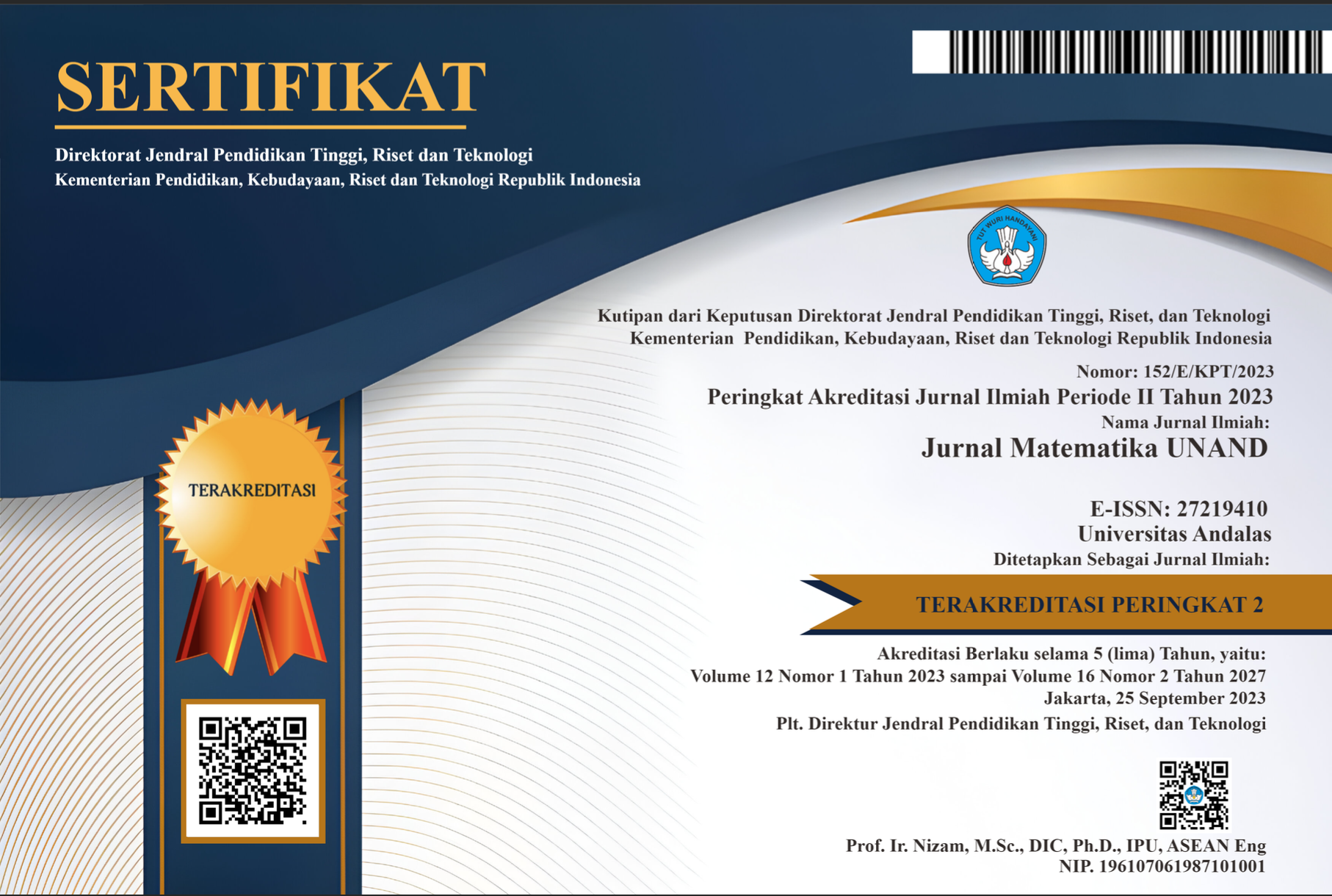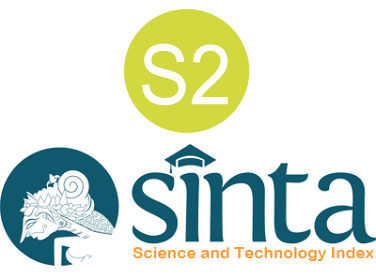GREY MARKOV (1,1) MODEL FOR FORECASTING THE PERCENTAGE OF THE POPULATION THAT EXPERIENCED HEALTH COMPLAINTS IN INDONESIA
Abstract
In mathematics, in addition to the time series model, Autoregressive, Moving Average, or Autoregressive Moving Average, the Grey-Markov (1,1) model can be employed for forecasting. One of the gains of this model is that it may cover a minimum quantity of data, which is beneficial in situations when the amount of data that is available is restricted but is not excessively vast. This model works well with data that does not exhibit a great deal of variability. The Grey model was further developed into the Grey-Markov model by including the idea of a Markov chain into the original model. In this particular investigation, the processes consist of first forming a sequence using a 1-Accumulated Generating Operation (1-AGO), then forming a sequence using an MGO, and finally predicting using an AGO. The procedure that came before it is actually a modeling procedure for the Grey model. In addition, in order to model Grey- Markov(1,1), it is necessary to initially compute the relative inaccuracy of the forecast that came before it. The following step is to partition the outcome of the relative error into numerous states, one for each interval of the relative error. After that, each error is categorized based on a state that has been specified in advance. The state that is defined within the class is used as the basis for making predictions. The percentage of the population in Indonesia that reports having health difficulties on a yearly basis was chosen as the case study for this research because it is relevant to the topic at hand. The data came from the Central Statistics Agency in the United Kingdom. The period covered by the data is from 1996 to 2021. The purpose of this research is to investigate the structure of the Grey-Markov Model (1,1) and provide a forecast regarding the proportion of the general population that will be affected by health issues in the year 2022. According to the findings of this research project, the forecast of the proportion of the population in Indonesia that suffered health complaints in 2022 produced predictive data that was 30.36%, with a very good accuracy value of 2.43%.
Full Text:
PDFDOI: https://doi.org/10.25077/jmua.12.2.108-120.2023
Refbacks
- There are currently no refbacks.
Copyright (c) 2024 Jurnal Matematika UNAND

This work is licensed under a Creative Commons Attribution-ShareAlike 4.0 International License.

Ciptaan disebarluaskan di bawah Lisensi Creative Commons Atribusi-BerbagiSerupa 4.0 Internasional.










